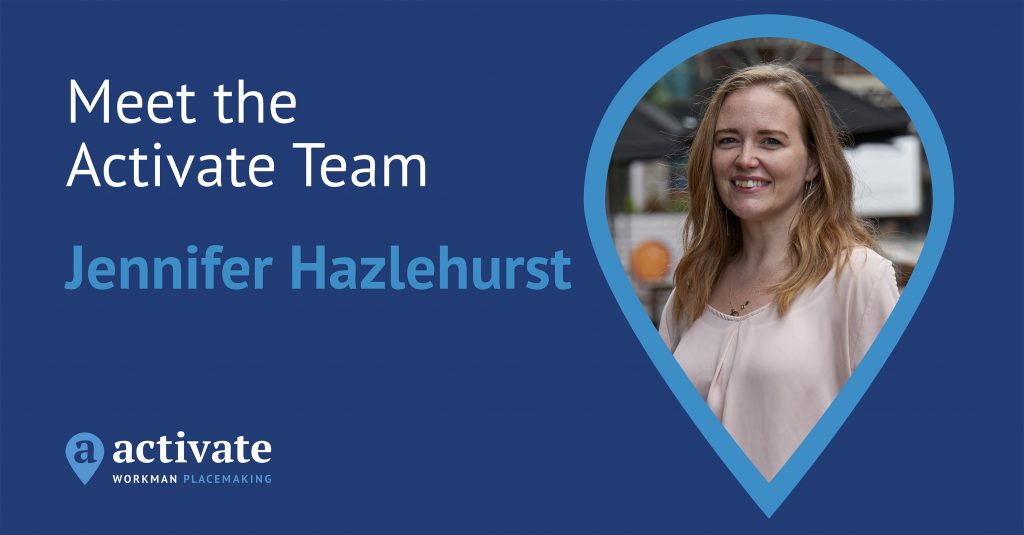
Across the Workman-managed portfolio, comprising more than 4,000 properties, our property management teams deliver great occupier experience through strategic engagement programmes and regular communication.
Here we meet some of the experts who lead our work to create a sense of place and community, particularly vital within multi-occupier buildings.
Richard Hart, Head of Property Management, UK and Europe
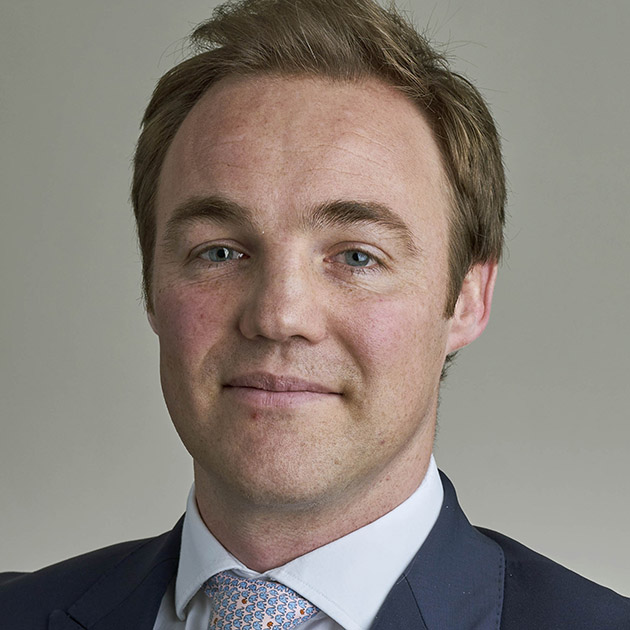
Having joined the firm through its renowned Graduate Scheme in 2007, Richard became a Partner in 2014. Today he’s responsible for the delivery of the property management service on behalf of both UK and European property funds, private clients, and investors including: LGIM Real Assets, CBRE Investment Management, CapitaLand and Segro. Richard works closely with clients to help maximise asset performance and value through a robust management strategy, with both ESG and customer experience at its core.
In recognising the importance of occupier experience in today’s commercial property spaces, Richard says: “We strive to meet the needs of modern occupiers, by ensuring that all properties in the Workman-managed portfolio offer stimulating, healthy environments that support occupiers’ physical, mental, and social wellbeing in an environmentally responsible way, while creating a sense of place and togetherness within the local community.”
Eleanor Newton, Senior Associate

A highly experienced property manager, Eleanor works closely with several prime office and campus sites within the Workman portfolio, including Westside in Hemel Hempstead and Republic in London. She uses her experience to build partnerships between landlords and occupiers through enhanced property management, focusing on operational excellence, wellbeing, and occupier experience to create environments which support personal and professional demands. Eleanor is also well-versed in the use of smart-tech and occupier-engagement apps to achieve building efficiencies and environmental targets.
Eleanor says: “Occupier engagement holds the key to successful and sustainable property management. Building strong connections with occupiers to drive change in how buildings are occupied is critical in the journey to Net Zero. To manage buildings safely and efficiently, it is more important than ever to understand occupancy patterns. Today, occupiers are looking to their landlords to meet their changing expectations, which landlords and property managers can only be aware of by working closely with them.”
Richard Price, Welcome Community Manager

Community manager Richard works to devise occupier experience and engagement and experience strategies for Workman’s Welcome portfolio. Working closely with the Welcome team and all front-of-house personnel, Richard leads communication and feedback programmes for individual assets and their occupiers, while delivering services tailored to their needs.
Richard says: “Our role is all about human connection; understanding exactly what occupiers want. In some buildings, this may be the delivery of a jam-packed programme of lunchtime events or bespoke wellbeing initiatives. In other buildings it may mean collaborating with occupiers to implement social initiatives with the local community, or we may be delivering any combination of these. Our ultimate goal is that occupiers get exactly what they want from their space and service, delivered seamlessly.”
Monika Newton, Partner

Passionate about customer service, Monika began her career in hotel management, a grounding which formed the bedrock of her drive to provide exceptional service for occupiers through Welcome, the Workman Offices service. Specifically designed to enhance the quality of the working environment and experience required by the modern office occupier, the Welcome team provides the highest level of customer service.
Monika says: “There is an interesting dynamic today in the landlord and occupier relationship; and with heightening competition between office landlords, the occupier experience in workspaces often becomes a deciding factor. Exceeding the expectations of occupiers directly contributes to our clients’ investment performance through improved occupier retention. We continually strive to evolve the customer experience, bridging the gap between traditional offices, flexible workspaces, and the home experience. The true point of difference now lies in collaborating with customers to co-create attractive workplace communities, which sit somewhere between a hotel and home.”
Andrew Sparrow, Director of Activate, Workman’s Placemaking team

Having previously managed the master planning and delivery of retail, office and mixed-use schemes across the country, including the Spitalfields Market Estate, Andrew has delivered a plethora of placemaking projects for a wide range of investors, developers, and local authorities. He advises clients on commercially viable solutions for transforming spaces into destinations that deliver dynamic occupier experiences. As Director of Activate, Workman’s Placemaking, Destination Marketing and Customer Experience team, Andrew is a specialist in enlivenment and placemaking strategy.
Andrew says: “Creating quality places where people want to live, work, and play is at the heart of the Activate service. The ongoing satisfaction and enjoyment of people utilising spaces is our top priority, so we are constantly working to generate spaces that promote people’s health, happiness, and wellbeing.”
Read more about our approach to Building Community across our managed portfolio.

How to make places help people to generate social value? Linking up with local councils, schools, and social enterprises can embed commercial property in the local area, helping buildings contribute to vibrant communities.
Sustainability does not begin and end with carbon reduction. The “S” of ESG – Social – has a huge role to play. The buildings in which people work, play, and shop define and shape their neighbourhoods, especially in cities, where they can have an enormous social impact upon communities. So how can investors and property managers ensure assets benefit both occupiers’ employees and the communities that surround them?
What is social value?
Creating social value involves engaging communities both within and around a development. When buildings support environmental, economic, and social wellbeing, they improve the quality of life of people using them by providing access to services and integration into the wider economy and society. Across the Workman-managed portfolio, our strategies are specifically designed to engage occupiers and visitors, to draw in the local community, and make buildings a part of the local community.
Great Northern: creating spaces that people fall in love with

Located in the heart of Manchester city centre, Great Northern is a mixed-use site, home to a cinema, bowling, restaurants, bars, entertainment venues, shops, and public square. It takes its role as part of a wider community seriously, offering services to local businesses and residential areas neighbouring the site.
A new space, “The Village Hall”, is open to any business on site for meetings and training sessions. The Workman team holds meetings in the space, and it is used by community groups such as a female choir group, and a parents-and-tots group.
Separately, “Little Northerners” is fitted out as a free space for families aimed at pre-school children for active and constructive play with a dolls house, a tepee, and construction blocks. Once a week, the space is hosted by a Play Facilitator. This is next door to the “Book Nook”, a free book-swap library run by volunteers from neighbouring residential block Great Northern Tower and from Manchester University, who organise and alphabetise the books. The space is used throughout the day, with a turnover of 1000+ books per month.
Outdoors, a public amphitheatre area has been created in the square at the front of the site. For summer, this was transformed into a giant sandpit with 50 tonnes of play sand, buckets and spades, and a large, wooden structured playhouse, free to use at any time of the day. A Forest Tots practitioner runs free weekly play sessions, which see children pour into the area, accompanied by parents and grandparents observing from surrounding picnic tables and seating areas.
Owners Trilogy and Peterson Group were originally granted planning consent to develop the warehouse into apartments, but reassessed plans following the pandemic, so official redevelopment of the site has yet to begin. In the meantime, the use of the space – much of which has developed organically – has informed the future development plans. Many popular community initiatives will be carried forward as part of this new neighbourhood within city centre Manchester, as the site will retain its public realm areas alongside private residents-only or office-work-only areas.
Touchwood: reaching out to schools
Touchwood, the prime Solihull shopping centre, which features 80+ stores – including John Lewis – plus 20 bars & restaurants and a Cineworld cinema, was created to provide an environment that not only extended the retail, commercial and leisure offer of the town, but also integrated into the existing fabric of the area. The centre is owned by US real estate investment firm, The Ardent Companies and managed by Workman, whose onsite property management team regularly consults with community partners to run initiatives that involve, attract, and support the local community.

It has developed strong ties with local schools, most recently working in conjunction with Solihull Council to run a competition where local schools were invited to create a flag for their chosen Commonwealth country made of entirely recycled material. The 16 flags then featured as a trail around the centre, with visitors answering quiz questions as they identified each flag. The centre has also fostered links with a local special needs school, with three students attending each week to do work experience. One has since been employed as part of the centre’s housekeeping team.
Republic: collaborating with charities
A next-generation office and education campus spread over four buildings comprising 650,000 sq. ft of office and retail space, Republic is at the forefront of East London’s commercial and cultural regeneration. Brought on board by Trilogy Real Estate and fund manager LaSalle Investment Management, Workman’s role is to manage the property effectively, while also helping it become a part of the local community.
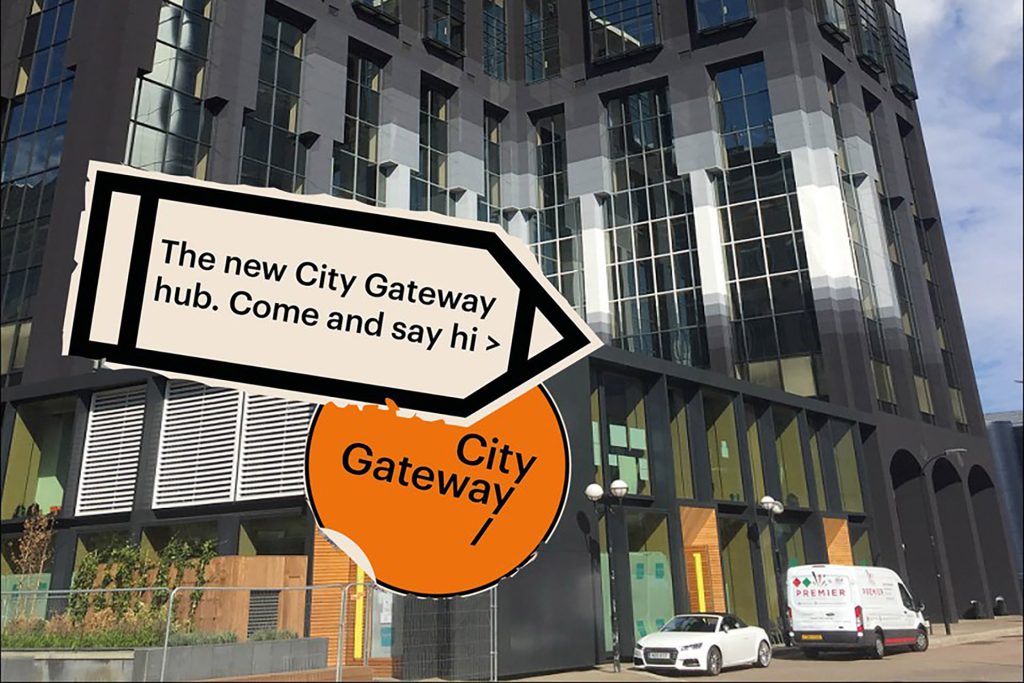
Its proximity to both the affluence of Canary Wharf, and Tower Hamlets where more than half of all children wake up in poverty, makes it an ideal base for City Gateway, a charity which provides education and opportunities to young people from disadvantaged backgrounds, along with volunteering opportunities for corporate partners. The charity provides support services, training courses, Traineeships and Apprenticeships for young people, readying them for the workplace. Through a network of placements with world-leading employers, City Gateway provides opportunities for employment at Canary Wharf, Republic and beyond. Indeed, Welcome has already facilitated several Apprenticeship schemes within the Republic campus.

The site is also home to a female-run social enterprise café called Tati, serving Bengali fare. Supported by not-for-profit Oitij-jo Collecti, with backing from the Mayor of London and other partners, the women obtained hygiene certificates, worked in professional kitchens, chosen the café décor, and developed front-of-house skills, before selling meals to Republic occupiers on a weekly basis.
Silverburn: cleaning up the community
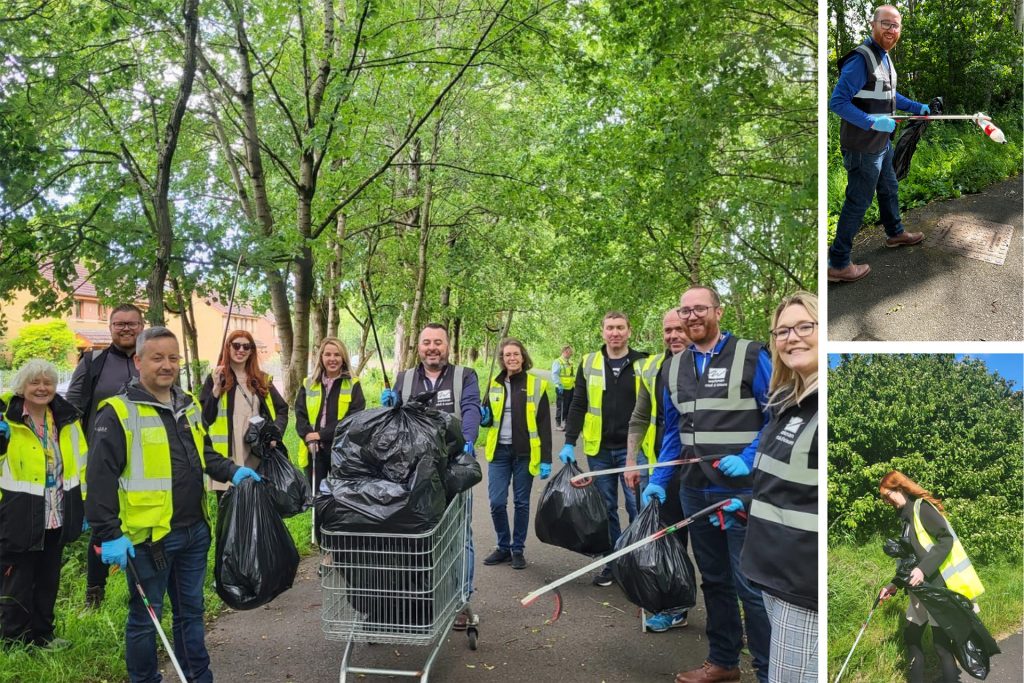
As part of environmental and community outreach work at Silverburn, Glasgow’s flagship shopping centre, the Workman property management team joins the quarterly litter pick in residential areas surrounding the 1,500,000 sq. ft site. Organised in conjunction with Glasgow City Council, the most recent effort took place on a clear sunny day and resulted in a big pile of rubbish collected by an enthusiastic team of volunteers. Since opening in 2007, Silverburn has historically generated consistently high footfall of 15 million people per year, boasting one of the highest average spends-per-visit thanks to affluent catchment areas such as Newton Mearns, Clarkston and Giffnock. With 125 retail and leisure units, the centre, owned by Eurofund and Henderson Park, is currently 80% occupied.
Further efforts to give back to the local community come in the form of official digital sponsorship of the Open Goal Broomhill FC football team. Always looking for creative ways to engage with its audience and customers, this partnership for the upcoming Lowland League season builds on an already established involvement with the team, including hosting its Keeping the Ball on the Ground show at Silverburn in 2019. This latest collaboration between Silverburn and the football club also draws in the Open Goal podcast team, who will film their popular football-dedicated podcast at the centre.
Read more about our approach to Building Community across our managed portfolio.

What lessons can office workspaces and retail assets can learn from each other when it comes to delivering the best tenant experience?
Retail and workplace assets alike are having to work harder than ever to deliver the best tenant experience to encourage people through their doors. Over the years, the retail sector has deployed a range of strategies to increase footfall and improve dwell times, relying on events and enlivenment such as family days, character appearances, food, and music. Today, with so many schemes no longer able to depend on the same old national retail chains, they are instead looking to smaller, local independents to occupy space, while also exploring the value of markets, and food & beverage, as a way to attract customers and build communities.
Esther Worboys, Placemaking Manager at Activate, Workman’s placemaking team, explains that retail assets are learning from other sectors in areas including community outreach and sustainability. “This is something that business parks have been doing very well for some time, and now retail is starting to adopt similar aspects of ESG such as using their wider outdoor space to for environmental and social benefits for the local community.”
Initiatives like installing beehives on site are popping up at shopping centres and retail parks as a way of delivering ESG goals as well as engaging local schools and colleges. At the NewRiver REIT plc-owned Cornmill Shopping Centre in Darlington, the introduction of bees, bird boxes and rooftop allotments, have not only added to the centre’s biodiversity, but also created community links through Darlington College and donations of produce to the local foodbank.
Better tenant experience – Cross-fertilisation of retail and commercial strategies
As Michelle Atack, Activate’s Destination Marketing Manager points out, asset managers who operate across both retail and commercial can see the benefits of strategies at one kind of asset and are starting to ask for something similar on the other. “They’re watching each other and taking a little bit of experiences from the retail element into the workspace world and vice versa,” she says.
On the flip side, although other types of commercial property are not trying to encourage spend and dwell time, they are aiming to build a network and community. And while the measurables for ROI may be less tangible for workplaces, engaging with occupiers and understanding what they want out of those community links or experiences is just as important.
“Doing the market research and understanding what occupiers want is another area where office property has learned from retail. It’s vital to find out what a particular community of people want to get involved in before organising events and activities,” says Esther.
At Workman-managed business park Croxley Park, for example, the demand is very much for family-friendly events, where everyone is welcome. The annual Croxley Park Summer Social event now includes entertainment for families and children, including bouncy castle, a roaming magician, street theatre, a DJ, cocktail-making, table-scaping, and floristry sessions. These large-scale events – popular for years across retail assets – are now a common calendar event at many commercial properties.

Harness social media as part of the tenant experience
During the pandemic, social media came into its own for commercial properties. Long utilised by retail assets to build communities of shoppers, it was harnessed by workplaces including Workman-managed Republic and Moretown, which were keen to reach out to employees with exercise tips and wellbeing content.
Post-pandemic, this strategy is vital for engaging employees who may be working from home part of the week. Social media is also being exploited at sites which are building links with local schools and local community groups.
A sense of community
Working collaboratively with local key stakeholders and partners brings greater results, and helps build and strengthen long-term relationships. Whether retail or workplace, it’s clear that building a sense of community is key to the success of real estate assets.
Community should be at the forefront of both retail and office destination marketing strategies – and campaigns to keep shoppers and employees engaged – because communities bring a sense of belonging. Over time, these initiatives improve the greater good of the wider community which properties serve and support.
Read more about our approach to Building Community across our managed portfolio.
Despite lockdown and the intermittent opening and closing of retail, 2021 has seen our Activate Destination Marketing team grow rapidly.
As this infographic shows, the team is now engaging with local communities and driving footfall at more than 20 retail and leisure schemes across the country, while also taking their skills into other commercial locations.
If you have a retail scheme, office campus or business park where the marketing needs to work harder, contact either Michelle Atack or Andrew Sparrow.
Having worked in the property sector for more than 15 years, Jennifer Hazlehurst, Marketing and Events Coordinator within the Activate Destination Marketing team, explains how she applies creative thinking to get the best results from clients’ destination marketing campaigns.
Q: What three words describe Activate?
A: Refreshing, energetic, collaborative.
Q: What has been your standout moment at Activate so far?
A: Activate has allowed me to develop and utilise my creative skills, finally using that A-Level in Art & Design. One of my standout moments was first seeing my creative designs come to life on both social media and websites, and following the social media engagement they allowed us to generate for our clients.
Q: Tell us about a time you’ve put your skills to their best use on an Activate destination marketing campaign?
A: Earlier in the year, with restrictions in place, we ran a lot of online campaigns around calendar events. Producing digital designs for these allowed me to use my creative skills, with one online Valentine’s competition reaching more than 16 thousand people, generating 2300-plus engagements, and proving a great campaign highlighting the site and its offers.
Q: Tell us about a time you’ve felt most challenged while working at Activate, and how you overcame that challenge?
A: Working on the destination marketing service from its launch has been exciting but trying to have that push in growing the business while also working from home, often alone with three children, has probably been my biggest challenge. A supportive and fantastic team, as well as seeing the great opportunity that was ahead of me, kept me focused to keep going and take one day at a time.
Q: In what ways do you think the pandemic has permanently impacted destination marketing?
A: The pandemic has focused marketers on achieving more with less. Following so many budgetary and physical restrictions, the pandemic has driven more innovation, seen in some brilliant digital campaigns over lockdown. Hopefully this will continue an increase in marketing campaigns that are unique and exciting, both in content and delivery.
Q: What change would you make to a single aspect of the property sector and why?
A: Having worked within the property sector for more than 15 years, there are various areas that could benefit from change. The business rates system is archaic and does no favours for either landlord or tenant. It is slow in revaluations, which then negate any savings, and has no accurate reflection on the current retail market.
Q: What are your spare time pursuits and how do they influence your role at Activate?
A: Three small children keep me busy with little real time for my own pursuits, but they do allow me to indulge my love of the outdoors and exercise by keeping them active. I love DIY and I am an avid reader. My children help develop my organisation skills (and help me stay calm in difficult situations) and I think my own pursuits encourage my innovative and creative side.
Q: What is your favourite building / retail experience worldwide, and why?
A: Having visited retail experiences as different as the mall in Dubai and the old markets in Budapest, I find it fascinating looking at how different and yet successful retail experiences can be. Whether it be an expansive, gleaming mall like Dubai’s or a crowded market steeped in history like Budapest, they can be equally emotive for such different reasons.
Q: What book or podcast do you recommend, and why?
A: As part of my degree, I studied a book called True Tales of American Life, which is a collection of stories written by people throughout America and edited by Paul Auster. It was one of the most moving books I’ve ever read. It made me laugh and cry, and showed a true insight into all aspects of human experience in an honest and refreshingly written text by everyday people.
To find out more about the Activate Destination Marketing Service visit > https://bit.ly/3DhY11s
If you have a retail scheme, office campus or business park where the marketing needs to work harder, contact either Michelle Atack or Andrew Sparrow.
Darlish is the latest occupier to maximise Activate’s ability to match occupiers with short-term void spaces at Workman-managed shopping centres.
The luxury ice cream maker has set up at the beautiful Christopher Place, St Albans, where they have taken a four-month summer lease of an otherwise void space.
With access to a large pedestrianised area outside the shop, customers can linger outside, creating a lively energy and buzz around the shop and in the centre, even with Covid restrictions in place.
Being a seasonal business, Darlish has a few key months in which to showcase its products. The store Christopher Place gives the brand an amazing amount of frontage, allowing an opportunity to play with interior design.
“Having a calm space to move around in has been fantastic,” Darlish reported. “Even with queues, which can get very long in summer, serving hundreds of ice creams is a breeze! Customers have even commented on how much they love the shop, thanks to Activate for making it possible.”

To find out more about the Activate Destination Marketing Service visit > https://bit.ly/3DhY11s
If you have a retail scheme, office campus or business park where the marketing needs to work harder, contact either Michelle Atack or Andrew Sparrow.
As Lockdown Two begins, responding to occupier needs and engaging consistently is more important than ever, which is why increased frequency of communication during this period is business-critical.
Having become accustomed to a greater work-life balance, it’s clear that employees are likely to be seeking more flexibility. But that’s not all. To meet future occupier expectations, offices will require attributes that both tempt comfortable home-workers and provide welcome relief for those keen to return.
From doggy day-care facilities to round benches for communal outdoor seating to Covid-safe events that bring communities together, what office users want is likely to have evolved in accordance with new behaviours adopted since hard lockdowns began more than 220 days ago. According to behavioural psychologist Dr Phillipa Lally, it can take between 18 and 254 days, and an average of 66 days, for new habits to be formed. So, investors and managers who take the time to listen to occupiers and deliver facilities to support these emergent long-term behaviours, will be in a strong position to both attract and retain users when they can finally return.
No one-size-fits-all approach
Our research among occupiers shows 70% are keen to attend social and networking events again, once they are back in the office. Indeed, listening to occupiers has also shown us a whole range of specific preferences: 52% of respondents (to a survey for a client with a portfolio of London offices) said they would be highly likely to use on-site cycle facilities if they were provided, while 63% of respondents from one of our multi-let London office buildings said they would be likely to attend Pilates / yoga classes. However, this is no one-size-fits-all approach – it’s vital that occupiers’ voices are heard, as not everyone is keen to bend during their breaks.
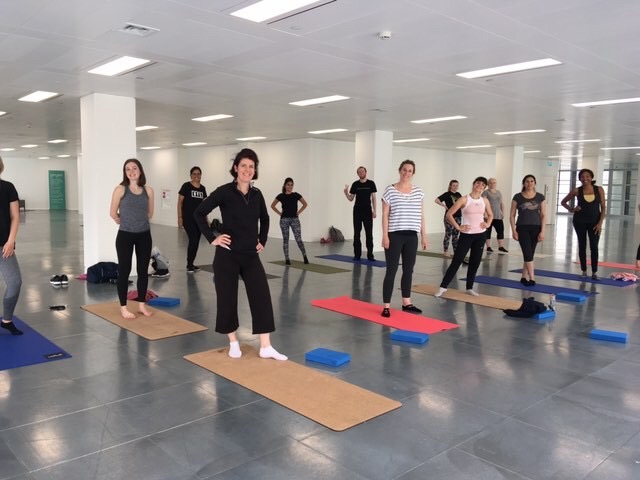
One fantastic example of involving the wider community in charitable and sustainability initiatives is Birmingham Business Park (BBP). In response to occupier feedback, the on-site team created six allotment beds for occupiers including Canon, EQ Technologic, Arval and Create Fertility. The allotments engender a sense of community, network and purpose among occupiers, who have bonded over the nurture of plants. There is also a hub offering ongoing online and offline learning for all allotment holders and occupiers at BBP. It’s proving a popular initiative, so four more allotment beds are planned for 2021, and vegetable trugs have been added.
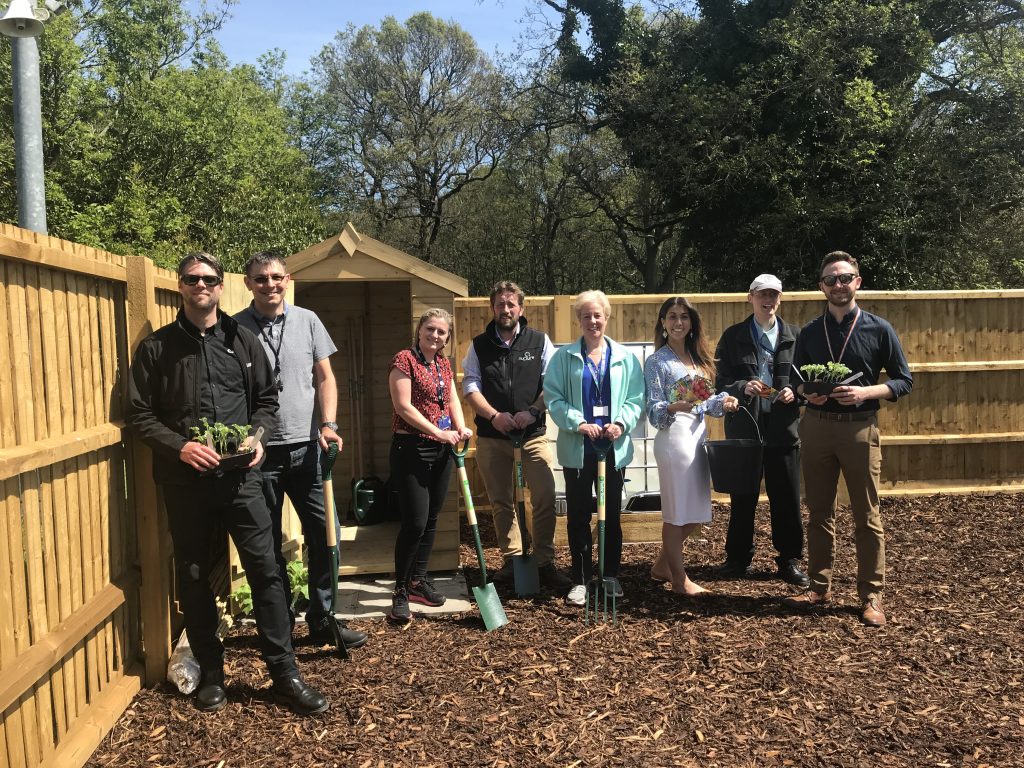
Two allotments were allocated to Age UK Solihull – the BBP charity partnership for three years, as voted by occupiers. Food banks are organised for the charity, money from sales of BBP honey is donated, along with Christmas presents. Indeed, BBP has been awarded an International Corporate Social Responsibility Award for support to local charities, including a grass roots sports club at Marston Green Junior School, where kit has been supplied for two seasons.
Foster continual engagement
By asking questions and considering the responses of the people who live, work and play in the buildings we manage, we foster continual engagement with end users, which allows us to deliver exceptional customer experience. This has a proven impact on occupier satisfaction and productivity, while also supporting our clients’ key asset management objectives of occupier retention and attraction.
As multiple lockdowns continue to be enforced, and with question marks hanging over the mass-return of occupiers, behavioural changes such as working from home may outlive the pandemic, leading companies to formally offer more flexible working. But offices remain vital places of innovation, collaboration, learning and networking. And while the quality of the office interior has traditionally been perceived as a key selling point, our research shows that occupiers will now also be looking for the chance to see colleagues face-to-face and be part of a community. Delivering that enticing reason for coming to the office has never been more important, but it demands dedicated and considered management.
“A vibrant and valued place to work”
Indeed, as James Coke, Fund Manager & Co-Head of Institutional UK Real Estate at Columbia Threadneedle Investments, writes: “While there are short-term headwinds, we believe over the medium- to long-term the office will remain a vibrant and valued place to work, and consequently, in the hands of an active manager, a viable and reliable investment proposition.”
For many properties, there has historically been little or no focus on community management and no wider programme of services, amenities and events. But it will be these elements that increasingly play a key role in the future customer experience that occupiers are looking to benefit from. Already, prior to Covid-19, we had identified growth in this area and the associated commercial benefits being provided. This requirement will only continue to increase, with bespoke solutions to futureproof properties now being drawn up.
Occupier engagement: only as good as its actions
At Activate, we are proficient in the delivery of focus groups and online surveys to understand occupier requirements and future aspirations. Where needed, we carry out assessments of void space and identify common areas for potential enlivenment activities. We review existing spend on occupier marketing, and for properties where this is not currently undertaken, we are well-versed in the creation of communication programmes for occupier communities.
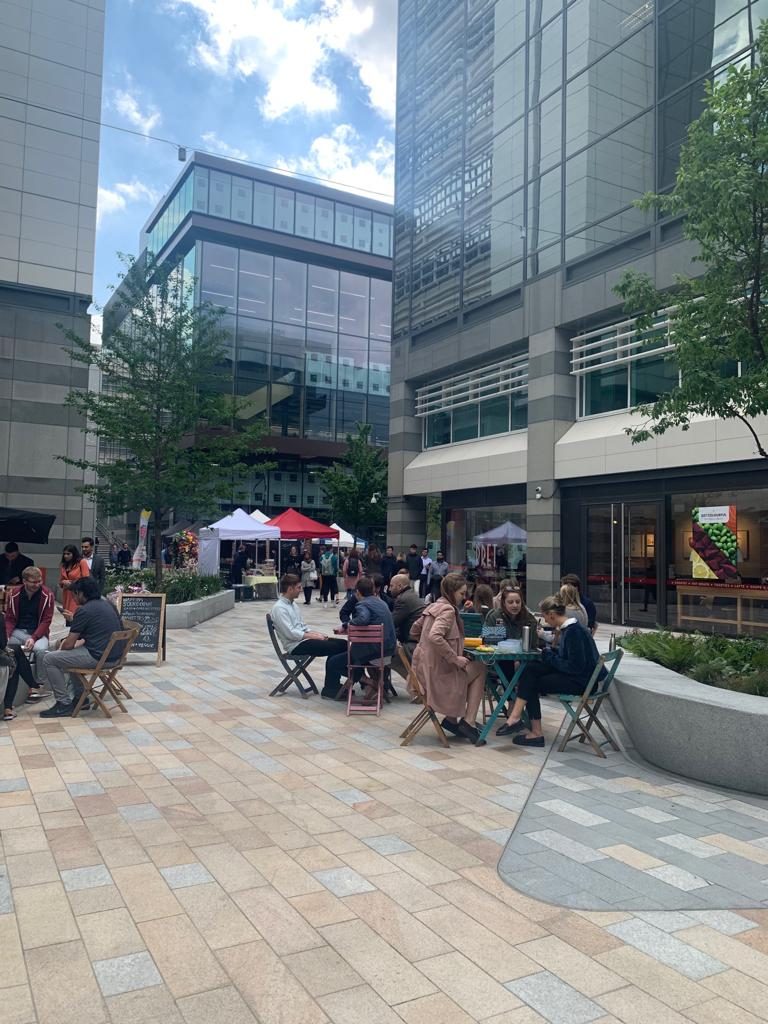
Of course, occupier engagement is only as good as its actions, and at Activate, we advise following up on changes discussed with occupiers as quickly as possible. This is not only the right thing to do, but also good business: occupiers and users of space will value the effort, and trust built throughout the pandemic will nourish relationships into the future.
The results of occupier engagement will help answer questions and support landlords in the creation of refreshed environments, which will not only appeal to existing occupiers, but also support marketing of the property to new occupiers. Crucially, change and progression will be shaped by occupiers, creating a customer experience they have developed together; and one which will make the office a pleasure to inhabit.
The Activate approach: strategies to improve customer experience
Here at Activate, we regularly engage with occupiers, which has allowed us to embed strategies aimed at improving and enhancing the customer experience. These are a few of the key themes we have seen from this approach:
- Room for community: Make space for a multi-use lobby area, this helps both in terms of fostering collaboration between multiple departments and creating a sense of community, which makes people happier and more productive. This also plays into the increasing desire to work in lounge settings rather than a desk environment.
- Be at one with nature: Allocate space for living walls, rooftop gardens, planting trees and developing community gardens. Our growing urban population is more disconnected from nature than ever before, yet studies have shown that being around nature improves short term memory, restores mental energy, relieves stress, and boosts creativity, as well as purifying the air.
- Change it up: Humans often flourish in a changing environment, so keeping things fresh through continual change can make the space more appealing. Buildings can provide entertainment with spaces that can evolve through imagery, lighting and media.
- Fit for all: Exercise is one of the most important aspects of maintaining good health and a high degree of productivity. Adding a fitness centre or the availability of yoga classes to your office building is a great way to ensure long term occupancy.
- On your bike: Environmental and economic issues have prompted many to bike to work, so it’s become increasingly important to provide secure and convenient bike storage. Adding a bike repair station to the storage area, or a visiting bike repair facility, would be an extra bonus.
By Andrew Sparrow, Director of Placemaking, Activate
To find out more about the Activate Destination Marketing Service visit > https://bit.ly/3DhY11s
If you have a retail scheme, office campus or business park where the marketing needs to work harder, contact either Michelle Atack or Andrew Sparrow.








